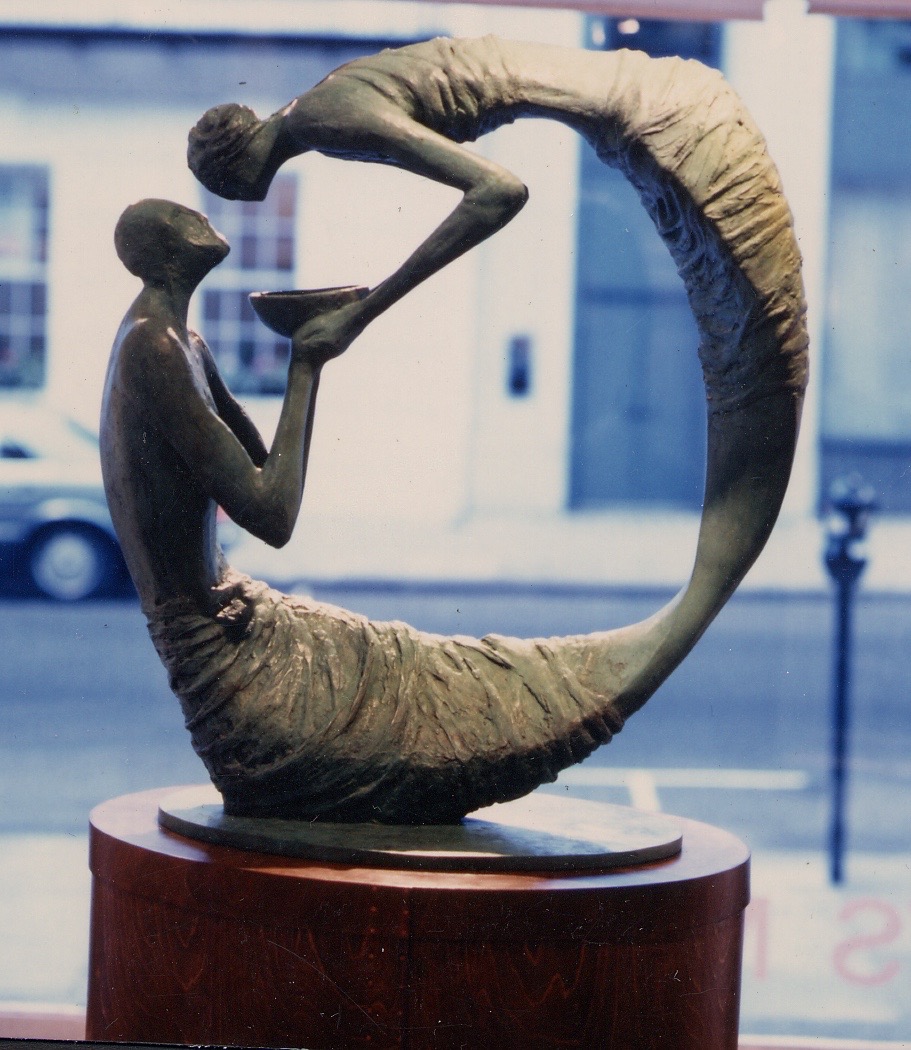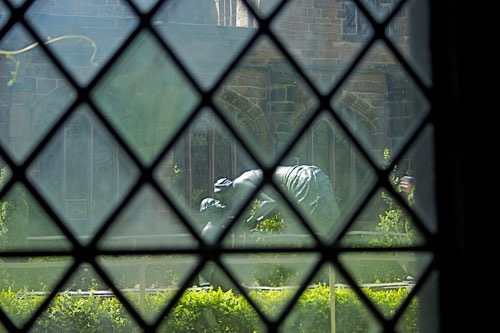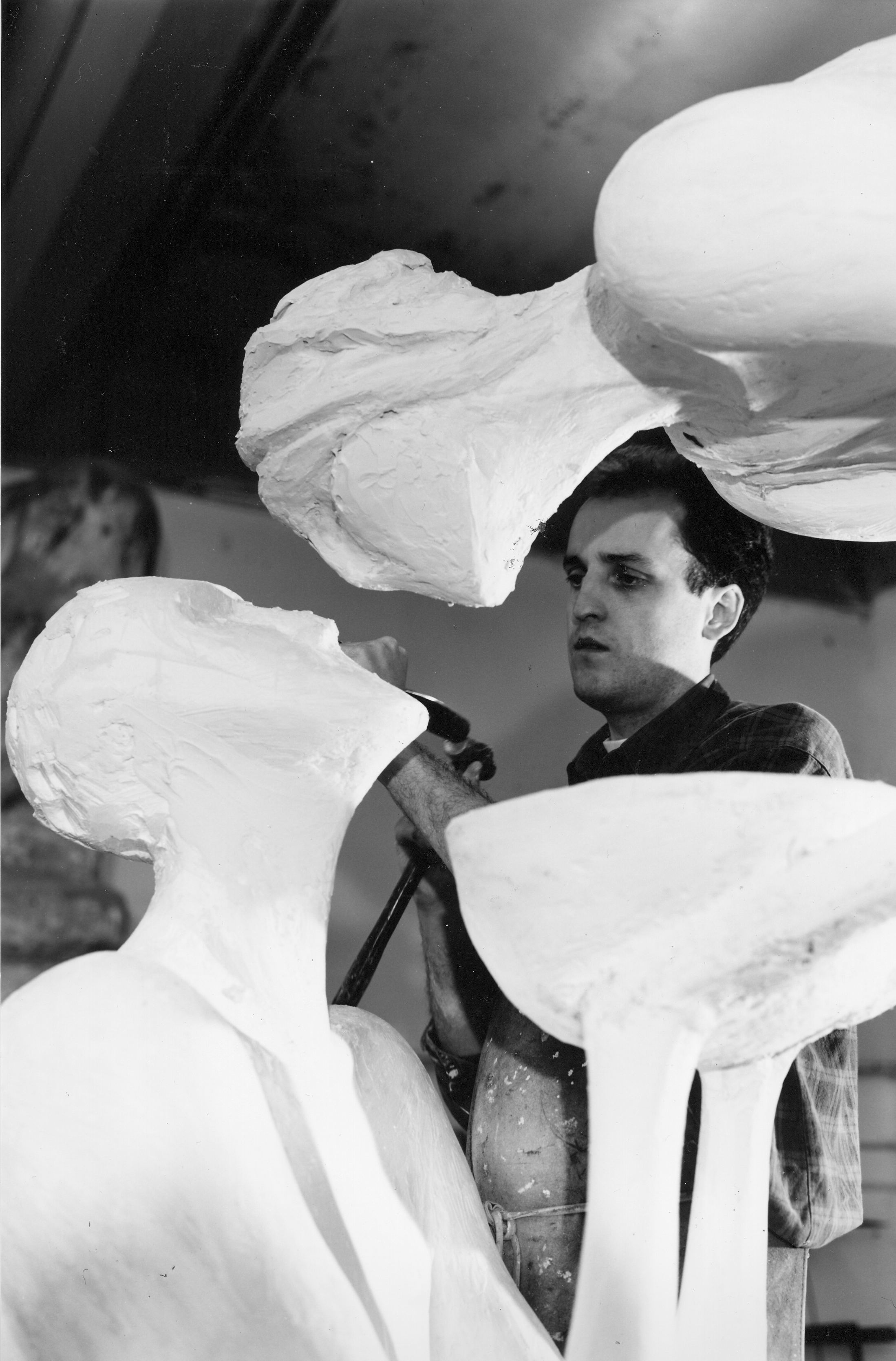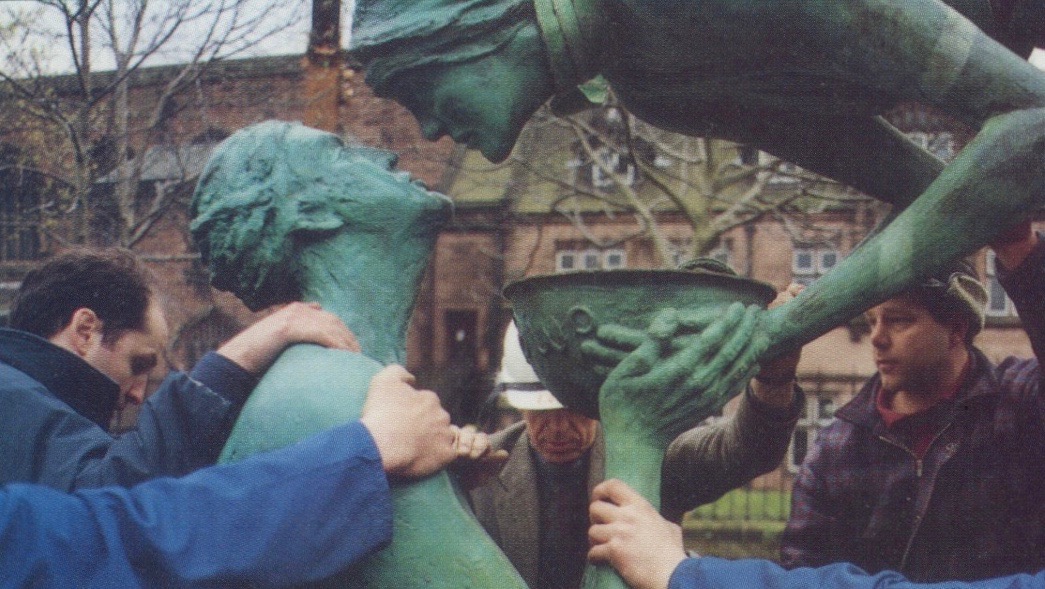The WATER OF LIFE
TITLE : The Water of Life DATE : 1994 CLIENT : Chester Cathedral LOCATION : Chester Cathedral Foundry : Castle Fine Art
AIM
The piece was designed for the Cloister Garden of Chester Cathedral in association with the 900th Anniversary celebrations of the foundation of the Benedictine Abbey of St Werburgh, on this site in 1092.
The sculpture entitled ‘Water of Life’ was funded by Capital Bank and dedicated by the Dean of Chester Cathedral, Dr. Stephen Smalley on 8th May 1994.
CONCEPT
The water feature depicts the encounter between Jesus and the Woman of Samaria, showing their shared bowl overflowing with water.
“Jesus said, ‘ the water that I shall give will be an inner spring always welling up for eternal life”
THE ARTIST'S STORY
It was a daunting task to conceive a sculpture for such a significant location as the cloister garden of a major English Cathedral. The sculpture being called for needed to be embedded and at home with its surroundings, of the right scale and materiality and a sacred quality worthy of the drama in the story and mission of the Cathedral.
The choice of story was arrived at very quickly. The Benedictine monks water supply at the centre of the cloister garden, was to become the stage set for Jesus’s encounter with a remarkable woman as she drew water from a well, as told in chapter 4 of John's gospel. The Dean being a scholar of John relished this challenge, and I appreciated his support and encouragement.
I lived intimately with this story, imagining myself as each of its characters. I then began testing a variety of form and shape, putting flesh on my thoughts in wire and fibreglass. Sacred art is the human fashioning of material with the hope it will invoke and reveal to the viewer something of the sacred. In many ways it is about working out a relationship to reveal something new.
After some months I had a maquette ready to present to the Dean & Chapter and also the Cathedral Fabric committee. I decided to add some drama by actually setting up the large model in the cloister garden draped with a white sheet. As the procession made the way to the cloister, a coach party of American tourists latched on, so I had quite an audience. Before unveiling the maquette, I spoke at length about the design and my intentions and thankfully when I pulled off the sheet the American contingent clapped and cheered enthusiastically - it was sold.
Over the years I have received thoughts about this piece from people all over the world, an artwork succeeds when it reveals out of its excess so much more than the artist could have ever written during its creation. Even as you work on a commission like this, you become its servant and it speaks back to you. There are times in a creative process when you simply need to listen and then faithfully respond.
My intentions with the piece were to show an intensity of relationship, in such, at that very moment, there was no one else existing in the world. In its sculptural form, I felt Christ needed to be set below this remarkable woman, while at the same time revealing how her life was springing out from his. I also wanted to show some ambiguity as to who was giving the water, and importantly for the water to be overflowing. It was the tenderness of Christ that touched me personally, her shame was to be taken away and not paraded across her community, with whom she became wonderfully reconciled.
A full size armature of the sculpture was brazed together in wire rod and modelled in plaster of paris, at the Bridewell Studios in Liverpool. It was cast in bronze by Chris Butler of Castle Fine Arts in Oswystry, and dramatically craned over the Cathedral into its final resting place. When I was finishing the waxing of the piece, a visitor asked if I was restoring it, which gave me great comfort as it confirmed to me its sense of belonging to this ancient sacred space, it belonged.




















